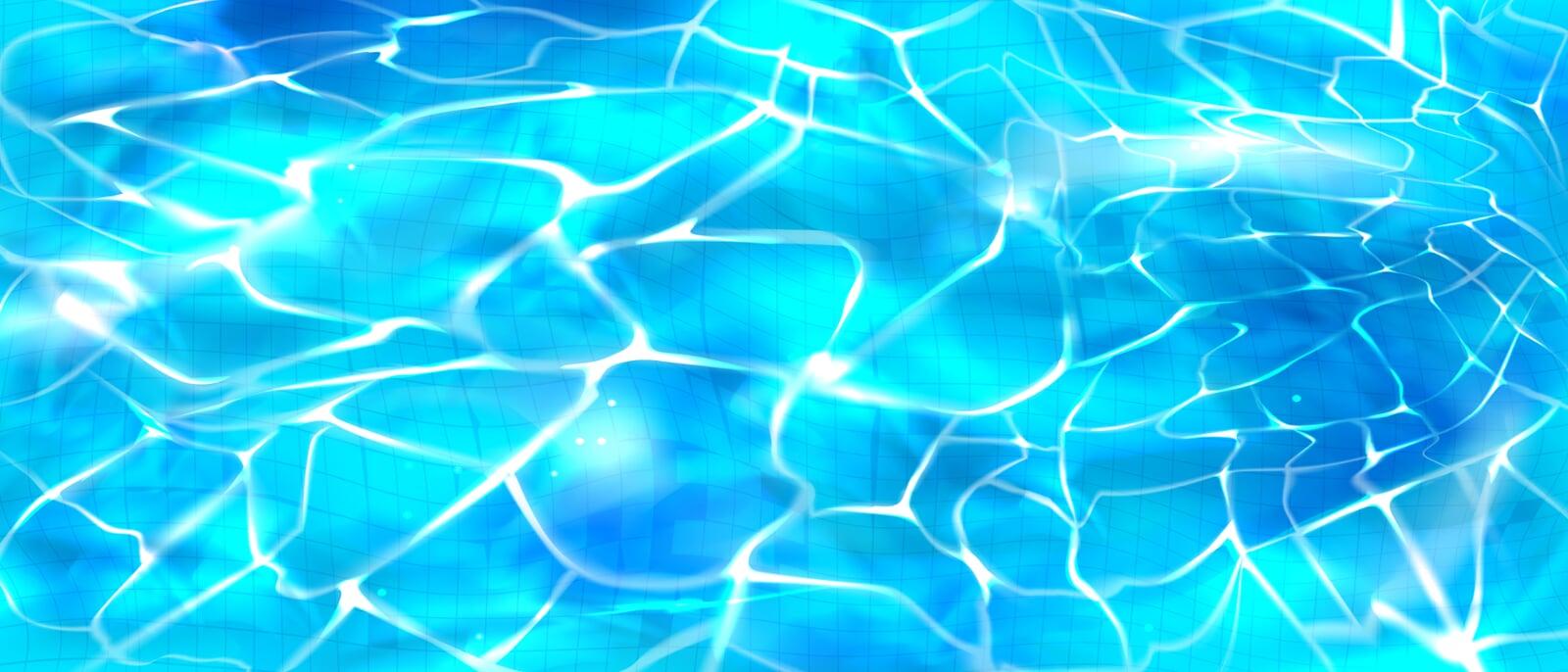
First start with an accurate calculation of pool capacity.
- To calculate pool gallonage: one should multiply the surface area of the pool by average depth by 7.5 or 5.9 depending upon the shape of your pool.
- Rectangle pools simply multiply length x width x average depth x 7.5
- Example 16 x 32. 16×32 = 512 x 4.5’ (avg of 3-8 feet) x 7.5 = 17,280 gallons
- Example 16 x 32 Grecian cut corners 16×32 = 512 x .95 (minus 5%) = 486 x 4.5’ x 7.5 = 16,416 gallons
For free form pools (oval, kidney, Mountain Lake, lagoon, round) or any pool with rounded ends, the multiplier becomes 5.9. Multiply length x avg width x avg depth x 5.9 to estimate gallon.
Example 19x22x37 mountain lake: (average 19 and 22 to 20.5) 37 x 20.5 x 4.5’ x 5.9 = 20,138 gallons
So go ahead and calculate the gallonage of your pool. Most formulas will work out very close to manufacturer’s specs with an average dept of 4.5 feet. Large areas at 3 feet and smaller areas at 8 feet average to about 4.5 depth. Pools with a smaller shallow end and a larger deep end might use an average depth of 5 feet or 5.5’
Once you have the gallonage you must decide if your pool would benefit from a twice turnover of water in any one filtration cycle. Square corner pools and pools with many bottom angles might need this extra filtration capacity in order to stay clean whereas rounded bottom pools such as fiberglass pools, round and oval aboveground pools and many concrete pool designs without visible bottom angles can usually stick to the published minimums of a once turnover of water in one filtration cycle.
One filtration cycle is the number of hours per day that you set your filter to run. Some people have adopted the habit of running the pool at night due to somewhat decreased energy kilowatt costs, even after these savings have been largely discontinued by the servicing energy company. People with solar heating systems must run their filters during the ‘standard solar day’ in order to accomplish the dual tasks of filtering their water and heating their pools without any additional electrical usage. It makes no sense to run your pool at night to filter and then again during the day to heat even if there is a small saving to be realized in the overnight electric rates.
Another consideration is to match your desired filtration cycle to the needs of your pool. For instance, if you are running a 1hp energy-efficient pump or a 2hp standard duty pump and able to achieve design flow rates of 110 gpm, then smaller, efficient pools might need only 2-4 hours per day for their filtration cycle. If you are using a solar heating system you would probably want to use the entire solar day to maximize heating potential. 10 am to 5pm or even 9 am to 6pm results in 7 or 9 hours of filtering each day. In such a case, it would be best to drop back to a smaller 1hp standard duty pump or an energy-efficient ½ hp pump and you can have your 7-9 hours of filtration/Solar heating per day without increasing your cost of electricity, an ideal and efficient scenario for this particular pool. For the most part, 80% or more of solar heat gains for any particular day will be had between the hours of 10 am to 4 pm. With a high capacity solar heating system and the proper pump and filter combination, one need only run their pool 6 hours per day.


